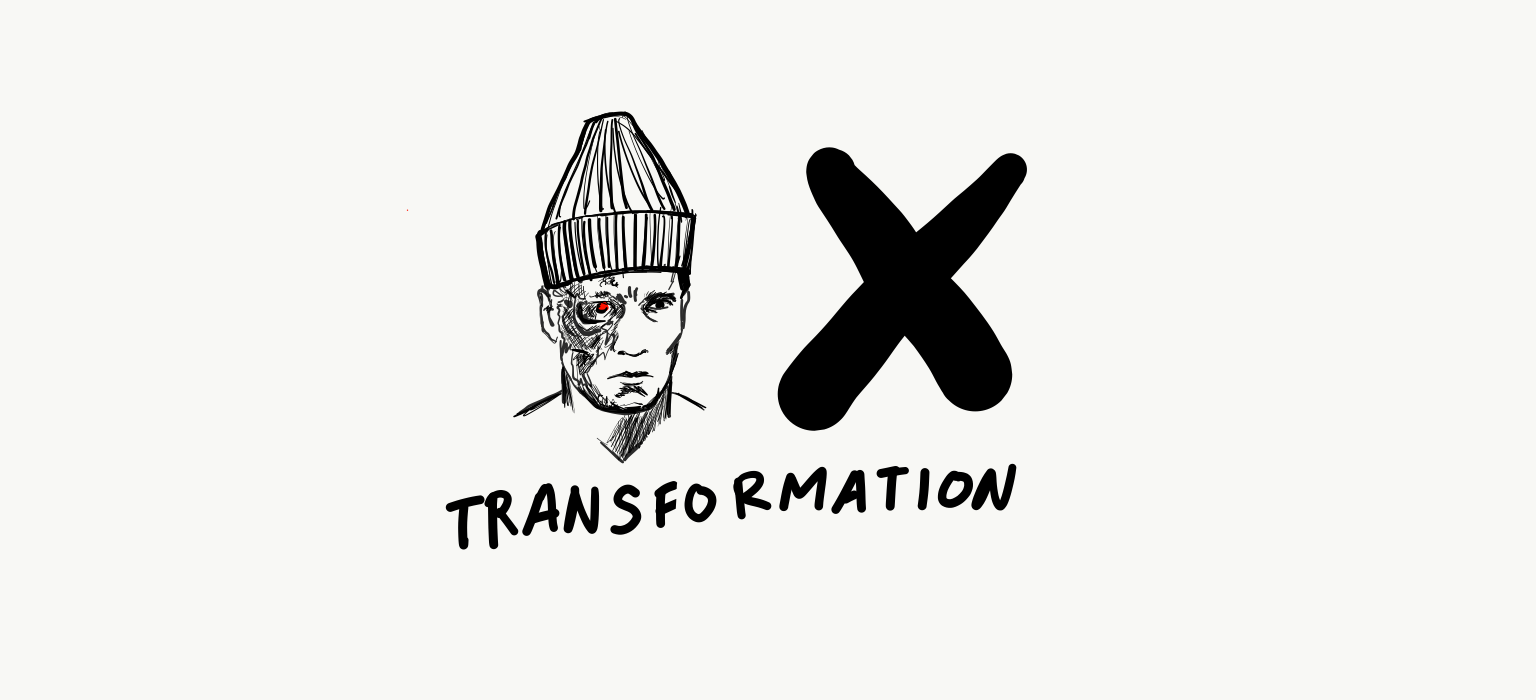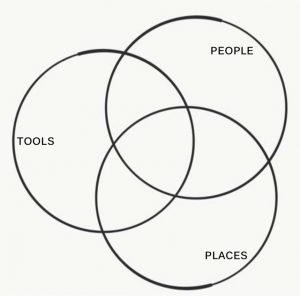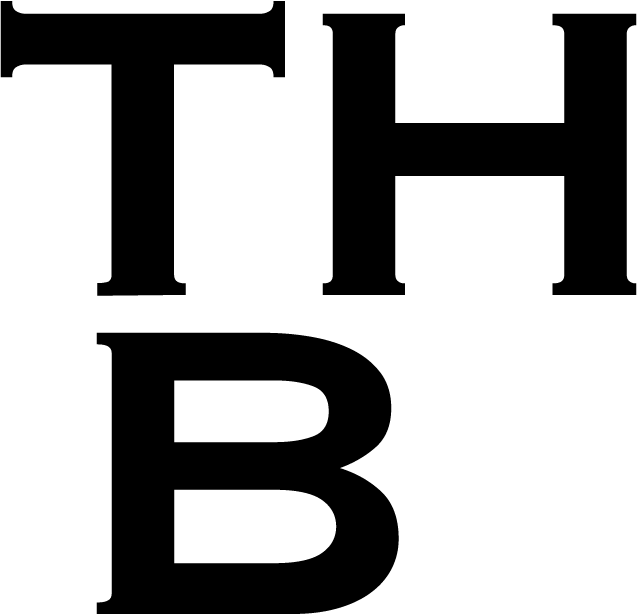
Smart Work: remote, hybrid or flexible
We are part of a steady evolution for some or of a radical change process for others. However we look at it, Smart Work seems to be the resulting way to do business in the very near future. As written in my previous article of this series, the ongoing digital transformation is already strongly affecting politics, communication and society in ways we can clearly feel, try to explain and but hardly understand.
Work is three dimensional
Work in the digital era is currently defined by 3 dimensions (Hackl et al, 2017). Neither dimension can be thought of on its own, if an effective, long lasting and realistic way of Smart Work wants be established. The dimensions are the following:
- People: This dimension is deeply linked to everything « human » in work and in an organization. It elaborates, amongst other things, how the digital transformation process is deeply leading « stiff, hierarchical organizational structures and control mechanisms » into more« horizontal, liquid network structures and a culture of trust ».
- Places: The second dimension is logically linked to everything « spatial » be it the office building, the cubicle, the table at Starbucks or the couch at home. The ongoing change process to so called work 4.0 (Linder, 2019) shifts work spaces to « contemporary surroundings allowing communication, as well as creativity to happen steadily ».
- Tools: This third dimension is focusing on all « tools » allowing in-width and in-depth connection, as well as communication. It is clearly not just about technological tools, but a much more in-depth approach on how to best use, integrate and process them.
The three dimensions are deeply intertwined. A small tweak on one area may cause a radical change on one of the others. This inter-connectivity may be one of the main reasons why the elaboration of transformation processes and change management in general are such a tricky task on one hand. On the other, it can be used as a great tool to examine, plan and direct flexibility in all its forms, in order to achieve tangible transformation processes for the long run.

Defining your degree of flexibility
The Swiss University for Applied Psychology (FHNW) has developed a FlexWork-Phase system (Weichbrodt, Berset & Schläppi, 2016), which allows to measure flexibility in four areas of an organization: Infrastructure and architecture (places), technology (tools), working model (people) and organizational structures (all 3 dimensions). The degree of flexibility in these four areas is subdivided into 5 phases, reaching from location-bound & highly hierarchical to location-independent & highly integrated.
| phase 1: | phase 2: | phase 3: | phase 4: | phase 5: | |
| location-bound & highly hierarchical | flexibility is an exception | inconsistent & in transition | flexible & project based | location-independent & highly integrated | |
| infrastructure & architecture | |||||
| technology | |||||
| working model | |||||
| organizational structure |
The Infrastructure & architecture sphere is covering everything linked to the workplace. It’s spectrum reaches form fixed cubicles to fluid space design, with hot-desk systems and work areas linked to the tasks’ needs (ie. Concentration, meeting, groupwork or privacy-call areas).
The technology sphere analyzes the availability of technological hard- and software allowing and supporting flexible work (space and time independent).
The working model sphere measures the company’s culture (through its values, rules and regulations), comparing them to completely flexible work.
The fourth sphere elicits the flexibility of the organizational structure in terms of teamwork, the shaping of hierarchies and the flow of processes (fix or agile).
Rewind: our three songs
In a previous article, I have established three possible “simplistic” ways of looking at this ongoing change. I have tried to emphasize these points of view with song titles. I agree, this may seem a strange and probably a rather selfish move. I personally often link references and ideas through the help of song lyrics. It helps me remember and understand things. It just happens since I am a child and I kept on doing it.
Song title #1
was a clear point of view regarding digital transformation. The company states that “everything is in its right place (by Radiohead)” and that things do and can move along as always. It mostly only takes “tools” into consideration. Smart Work is often reduced to remotely working from home a few times a month by adding “classic” collaborative applications (Skype, Zoom, WhatsApp, email et cetera) or putting some data on a cloud allowing remote access. Although the “classic office” may be different for a few days, the company mostly keeps on applying the same processes, rules, objectives, management style and hierarchies. Remote may be defined as smart. This company would be further to the left in the FlexWork-System.
Song title #2
kind of explains how digital transformation is witnessed. The work environment somehow gets “Harder, better, faster, stronger (by Daft Punk)”. This company takes “tools” as well as “places” into consideration. Smart Work is often seen in a broader context. It is linked to a freer approach in terms of scheduling time and office space, even if they are not completely fluid yet. The employee has the possibility to work remotely from home, depending on the task they are dealing with. The technological tools at disposal are well integrated and link the “main office” and the “home office”. This hybrid approach is very common and an important step in the transformation cycle. Unfortunately this company has not yet fully disengaged from its classic and “old-school” control mechanisms. Staff may work smartly, but the objectives , the communication processes and the management are not yet there. The company misses the “people” dimension often causing motivational and inter-relational issues (variable in size, depth and importance). Just have a look at the vast amount of articles trying to help fixing the hybrid-office management problem. This company would be somewhere in the middle in the FlexWork-System.
Song title #3
is “talking about a revolution (by Tracy Chapman)” that is going on. This song’s company is completely aware of that fact and highly flexible. It fully integrates all three areas “tools”, “places” and “people”. As within the company before, teams and tasks are organized in a hybrid way, some even distributed. Time and space have a clear focus, but can be organized freely and fluidly. This is not just giving employees the opportunity to plan their days according to their needs and strengths, but allows the company to free enormous amounts of possible space (office, parking etc). The company clearly trusts its employees and vice versa. The quality of work and its rewards are not based on the time a person has spent on an activity or on having followed the exact imposed “company way”, but the obtained previously fixed objectives linked to a project. Processes are agile. Possible applications of Scrum et cetera are common practice. Through this flexible approach the organization, the working space with the implemented technology and the employees take on an entirely different and new shape. This company would be somewhere in the right in the FlexWork-System.
Where does your company position itself? This is by no means a competiton or test. The cycle of transformation towards an engaging and effective smart working environment is long and often bumpy. In order to start somewhere, I think it to be interesting and inevitable to sincerely reflect as a company, look at ourselves in the mirror and state where and who we are. This allows to better decide where we would like to go, to realistically plan a path And to take enough time to get there.
References:
Kraft, C., Peter, M.K., (2020). New Work: People, Place and Technology – die Arbeitswelt im digitalen Zeitalter. FHNW, Institute for Competitiveness and Communication.
De Vincentiis, P., (2020). Tante aziende pensano di fare smart working, ma in realta è solo telelavoro. Il Sole 24 Ore.
Knight, R., (2020). How to manage a hybrid team. Harvard Business Review.

